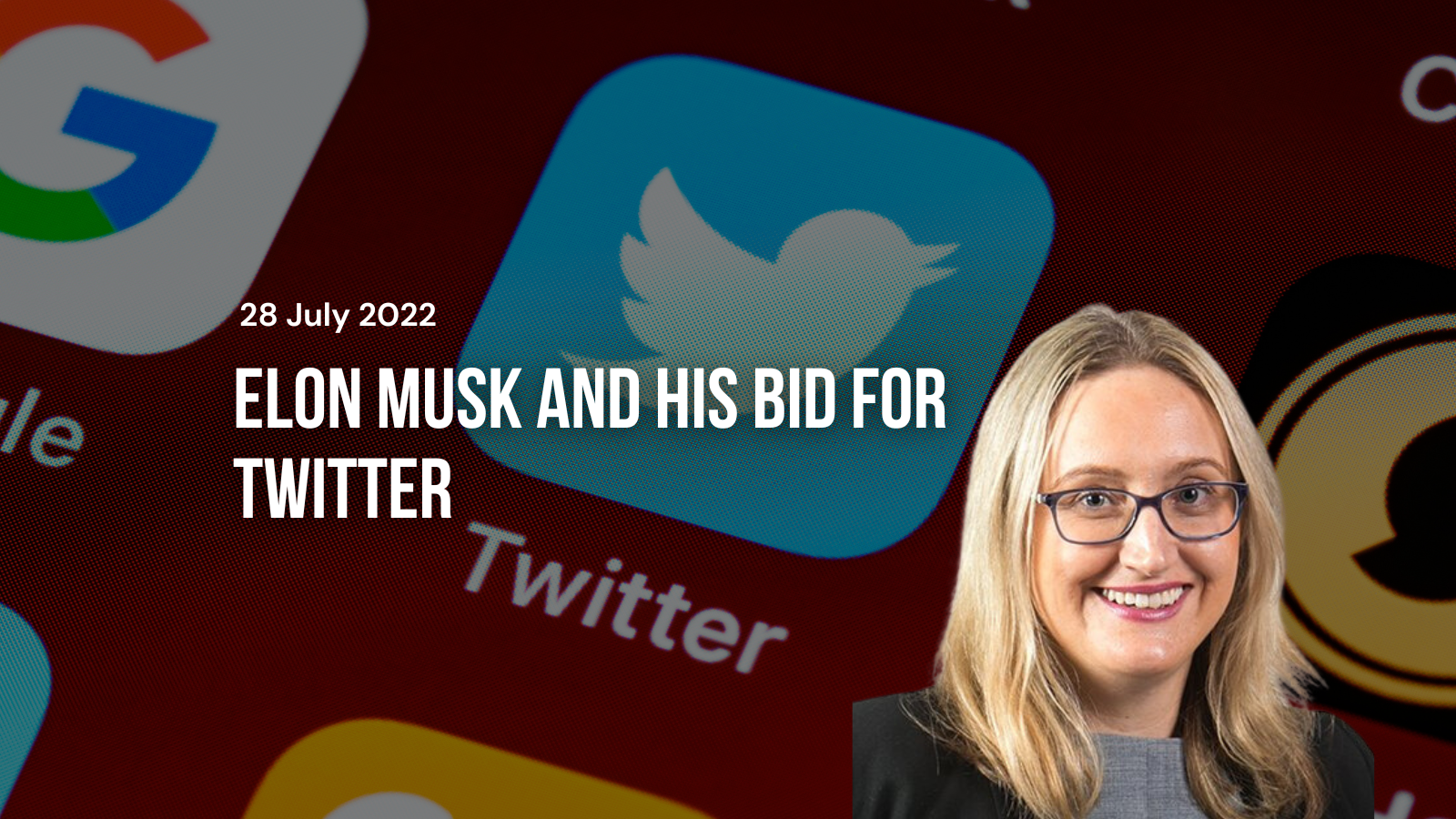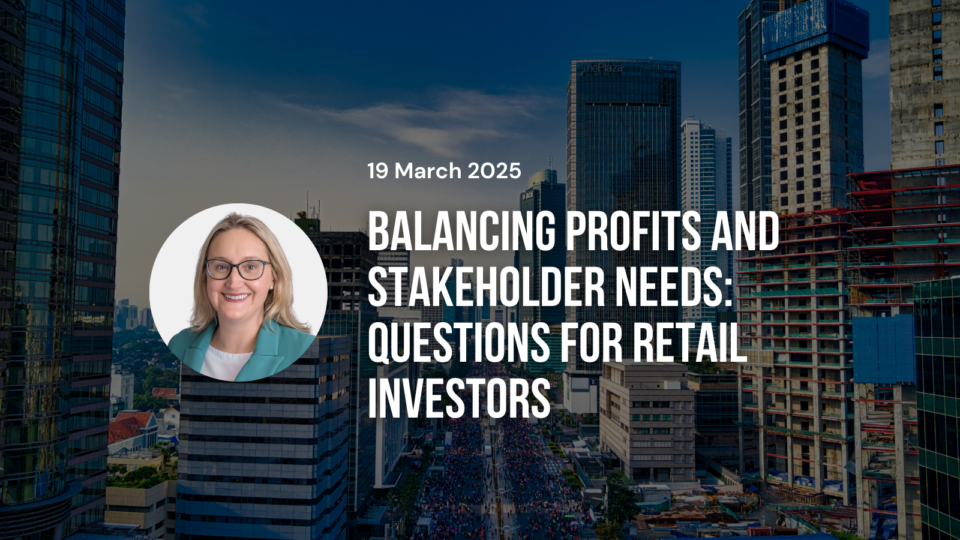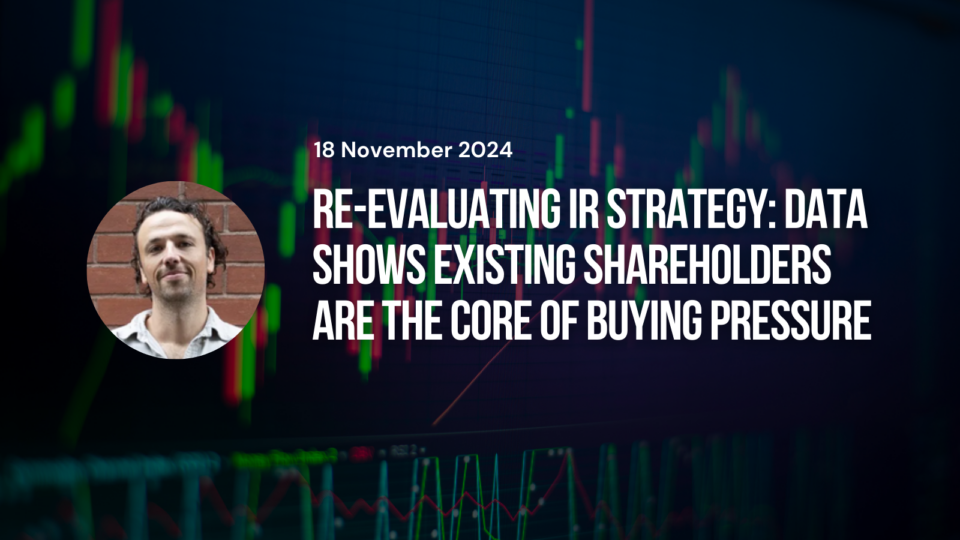

By Rachel Waterhouse, CEO, ASA
13 July 2022
Last month I wrote about activist investors and how a well-resourced individual or stakeholder can influence change at a company level. Perhaps the most significant example of this transition was Tesla Motors’ CEO, Elon Musk, the world’s richest man in June 2022 with a net worth of $227b [i], who recently made a US$44 billion play to make Twitter a private company. His stated reason was to protect free speech on the platform.
At the time of writing this column, he was reportedly abandoning the deal to acquire Twitter. He accused the social media giant of failing to comply with its contractual obligations, which required it to disclose the number of fake or spam accounts, and the number of monetisable users.
Musk’s lawyers stated he needed this information to ‘make an independent assessment of the prevalence of fake or spam accounts on Twitter’s platform’, in order to proceed with the transaction.
Mr Musk alleged that Twitter has failed or refused to provide this information in full, unjustifiably ignoring or rejecting requests, or claiming to comply but providing incomplete or unusable information.
A key metric in question was the monetisable daily active users (mDAU). Twitter’s mDAU was 217 million for the three months ending 31 December 2021, an increase of 13% year over year. In its 2021 annual report, Twitter claimed that it uses this metric to evaluate its business, measure performance, identify relevant trends, formulate business plans, and make strategic decisions. According to the company, it is: “the best way to measure our success against our objectives and to show the size of our audience and engagement”.
Twitter defines mDAU as people, organisations, or other accounts who logged in or were otherwise authenticated and accessed Twitter on any given day through twitter.com, Twitter applications that can see ads, or paid Twitter products, including subscriptions.
Twitter mentions that this measurement is not based on a standardised industry methodology and is not calculated in the same manner or comparable to similarly titled measures presented by other companies.
What has happened since the bid?
The US economy has changed a lot since Mr Musk first proposed buying the company:
- the Nasdaq entered bear market territory in April 2022;
- the S&P 500 slipped into an official bear market on 13 June 2022;
- high rates of inflation and a disrupted supply chain are prompting speculation the US may soon enter a recession; and
- Elon Musk’s own net worth – largely tied to Tesla stock – has fallen by US$65 billion, or approximately 26%, US$21 billion more than the offer to buy Twitter.
The last point may have been mitigated somewhat with Mr Musk selling $US8.5bn of Tesla stock soon after the announced bid to free up funds for the purchase.
Twitter’s share price has dropped from $51.70 on 25 April to $38.79 on 7 July, which is a higher drop than its peers, technology-based funds. Additional drops in the market could erode the value of the company further.
So why has the bid been withdrawn?
It is hard to know the exact details of what has happened between the parties.
It may be that Twitter has not been transparent or disclosed sufficient key information to its current shareholders, let alone someone looking to purchase the company. Conversely, Mr Musk could have buyers’ remorse, failing to do sufficient due diligence before making the decision.
Some argue that he is justified in walking away, as a potentially significant number of spam and fake accounts may have caused the company to be overvalued.
Others point to the agreement requiring Mr Musk to pay a break fee or to be forced to purchase Twitter.
If he walks away without penalty, Twitter’s share price will be impacted. Mr Musk’s concerns will undoubtedly raise fears about the company’s transparency, and there may ultimately be calls for better governance and accountability.
As we see in mergers and acquisitions in the Australian market, usually a buyer proposes a price and then the directors consider whether it’s high enough to entertain putting the opportunity to shareholders. If it is, the potential acquirer and company develop an agreement which includes whether there’s an opportunity for exclusive due diligence or not, what are the conditions that need to be met to continue to implement acquisitions (usually “no adverse event” is one of the conditions), and break fees and reverse break fees are set. The lawyers for both parties are probably weighing up if there are penalties available to either side.
So what can you learn from this?
While most readers won’t be looking to purchase a multibillion-dollar company anytime soon, there are some lessons you might want to apply to your own investment strategies:
- do your due diligence – know what you are investing in and make rational not emotional decisions;
- consider how the purchase fits into your overall investment plan – are you looking for growth or dividends? Know what the company offers;
- assess the value of the shares you are planning to purchase: consistent, forecastable earnings growth; a strong balance sheet with good cash flow;
- know what impact a market downturn may have – does the stock have long-term value if it is susceptible to market fluctuations?
- consider whether the leadership team has the skills and experience to deliver on the stated strategy that will deliver continued growth. A popular investment strategy is to invest in shares of companies still led by their founders.
- assess the strategy, whether its goals align with those of the industry in which the company operates, and whether the company is achieving them; and
- consider where you can find appropriate information to make your decisions – if you can’t get what you need, maybe it’s best to walk away?
[i] https://ceoworld.biz/2022/07/11/the-worlds-wealthiest-people-july-11-2022/





